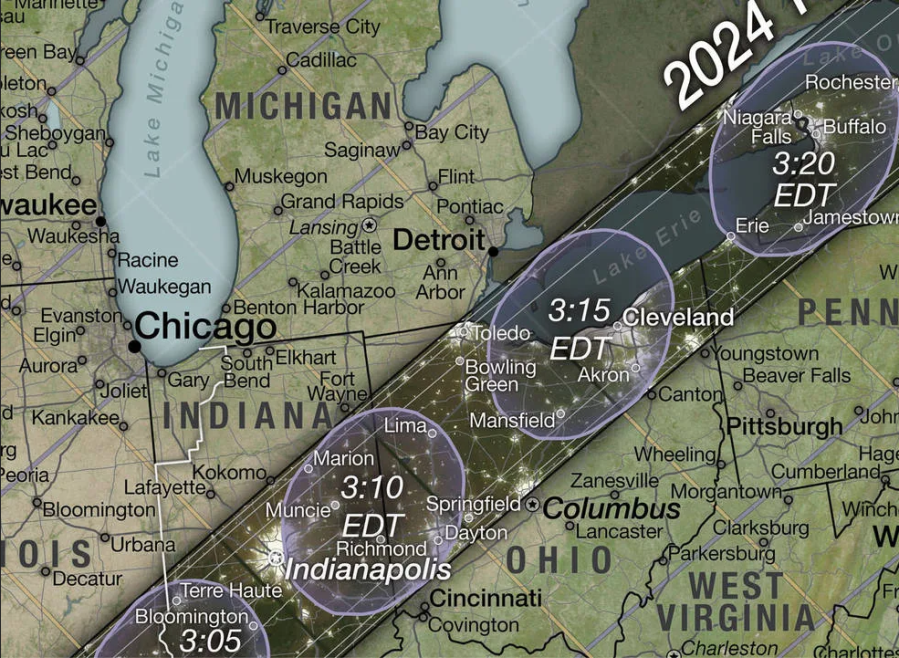Viewing Monday’s total solar eclipse safely
COLUMBUS, Ohio (WCMH) – The total solar eclipse is only a day away, which is a good time to focus on eye safety when experiencing the event in central Ohio Monday afternoon.
The last total solar eclipse visible in Ohio occurred in June 1806, and the next one will not happen until 2099 across the Buckeye State.

More than 30 million Americans will be in the path of totality that stretches from Texas to Maine, and slices through the northwest half of Ohio.
Solar eclipse inspires Columbus songwriter
In Columbus, the partial eclipse will begin at 1:55 p.m. Eastern time and end at 4:26 p.m., with peak totality (99.6 percent) occurring at 3:12 p.m. Areas just northwest of the city will witness darkness for about 30 seconds up to several minutes. The longest viewing time will be about 3 minutes 50 seconds in a band from west-central Ohio to Upper Sandusky and Cleveland.
Protective eyewear is essential during the eclipse to avoid the risk of permanent eye damage. Youngsters, especially, should be reminded by parents not to even peek at the sun without their approved safety glasses.
Dr. David Rogers, chief of Ophthalmology at Nationwide Children’s Hospital and chairman of the AAPOS solar eclipse task force, encourages families to take preventive steps prior to properly prepare for eclipse viewing.
Best places in central Ohio to see solar eclipse
“Only ISO-Certified solar eclipse glasses can protect your eyes from the damaging rays the solar eclipse will emit. Eclipse glasses are 100,000 times darker than regular sunglasses and block the damaging infrared and ultraviolet rays of the sun that will oxidize the retina leading to permanent vision loss.”
Rogers explained the nature of the serious and potentially permanent eye damage that occurs if a person looks at the sun. “The damaging part about this whole event is that there’s ultraviolet (UV) rays that we really can’t see. Those UV rays enter the eye and they can damage that sensitive retina in the back of the eye.”
The damage from the sun occurs through the process of photo oxidation, which Rogers said “causes free radicals to be released in the back of the eye in the photoreceptors. Those photoreceptors are permanently damaged; they cannot repair themselves.”
Photographer gives tips to capture solar eclipse
He stressed that your certified eclipse glasses must be put on while looking down or away from the sun, to ensure proper fit, before looking up to observe the spectacular event.
NASA has information on how families can construct a box pinhole projector to ensure kids have another safe way to view the eclipse.
Parents are advised to discuss all the precautions before the celestial event of a lifetime and make sure that children are fully aware of the risk of severe eye damage if protective glasses are not worn at all times during the total solar eclipse.
For more information about eye safety for all ages during the eclipse, you can click here.
For the latest news, weather, sports, and streaming video, head to NBC4 WCMH-TV.

